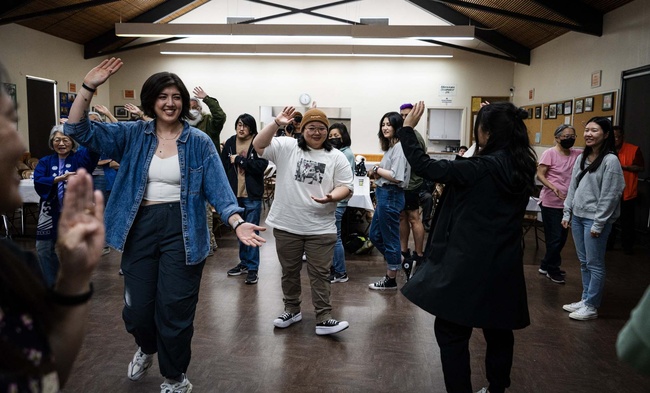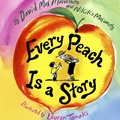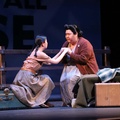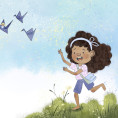One of the iconic symbols of Obon, the centuries old Japanese festival honoring one’s ancestors, is the lantern. Lanterns are believed to help guide those spirits from the festival back to the spirit world. This year, “Lantern Song,” commissioned by Buddhist Churches of America (BCA) to mark its 125th anniversary, takes its place among the traditional tunes. The new song was composed and choreographed by Bonbu Stories, a collaboration of five Asian American artists from California including:
Miharu Okamura: a Yonsei singer/songwriter from Oakland Buddhist Temple
Sydney Shiroyama: a Yonsei minister’s assistant and taiko player from Palo Alto Buddhist Temple
Miko Shudo: a Yonsei singer/songwriter and music instructor from Oxnard Buddhist Temple
Kendall Tani: a Yonsei sushi chef, visual artist, poet, and taiko player from Mammoth Lakes
Vicky Zhang: a first generation Chinese American/Australian mechanical engineer in the Bay Area who is also into taiko, composing, and movement
The members of Bonbu Stories agreed to be interviewed via email about the creation of “Lantern Song,” which they performed at many Obon Festivals this year (lightly edited for length).
* * * * *
Esther Newman (EN): How did Bonbu Stories get its start?
Sydney Shiroyama (SS): We first gathered in 2019 after a friend of mine asked me to compose a taiko piece around the theme of mental health. I knew I couldn’t do it alone, but I loved the idea and reached out to some talented friends who I thought might be interested. Luckily, they were. In just one weekend, we pulled together a music performance that expanded upon Kendall Tani’s spoken word piece, “Ways of Being.” Things clicked as we inspired one another to share and create.
After our first project, we continued to gather and work on things that interested us—specifically themes relating to our identity as Asian Americans. We came up with the name “Bonbu Stories.” Bonbu is a Jodo Shinshu Buddhist term meaning “ordinary/imperfect/unenlightened being.” We resonated with this as it carries with it a sense of compassion and acceptance for human life and our flaws, mistakes, and potential for growth.
EN: Upon receiving the request to create a new Obon song, how did your creative collaboration develop? What inspired the lyrics? Did the melody follow the lyrics or the other way around?
Miko Shudo (MS): We took inspiration from the practice of writing names of passed loved ones on lanterns that are hung at Obon. Seeing the lanterns reminds us that our ancestors aren’t really gone—they’re in our hearts and minds as we live and carry on with life. Miharu and I took this idea into a songwriting session. If I remember correctly, a simple chord progression came first, words and melody kinda came together, and later we realized that the song was a conversation between the living and the dead.
Miharu Okamura (MO): I thought about the people I’ve lost and how that made me feel. I scanned my memory for shared moments with them that imprinted how I cope and string along without them. Then came the first verse:
Your weathered shirt I love, keeps me warmer when I need you in my arms
Connecting with my emotions, I explored the frustration I feel when I’m trying to continue life without them… the moments in time that feel impossible.
I try to carry on, but I get in my own way
You told me to be strong
And now you’re gone and it pains me to look back
Never thought it would hurt so bad without you
Wanting to brighten up the song at the pre-chorus, words inspired by my baachan and my great aunties came up. Growing up, they were definitely some of my role models. By witnessing their own unique personalities, they taught me to be strong and to speak my mind.
Don’t fret, don’t worry, you’re strong, you’re tough
Live your life, this beauty it comes from us
Be yourself, I promise it’s enough
These are words perhaps never said aloud, but words I’ve always felt through their actions and love whenever I was in their care.
MS: The second verse is spoken from our ancestor’s perspective. They offer words of comfort and encouragement, and a reminder that they are right here with us if we can become mindful of their presence.
Place your hand on your heart
Hear it beating, that’s the sound of our love
In my own experience with grief after losing my mom and baachan a couple years ago, I found tremendous comfort in the teaching of “no birth, no death” by the Buddhist monk, Thich Nhat Hanh. Just like a cloud never dies, but instead transforms into rain, then to a river, ocean, and a cloud again, our very heartbeat is an extension of our parents and grandparents and so on. As long as my heart beats, so do theirs, and to me, it makes their presence feel very real and alive.
EN: What elements in “Lantern Song” were important to include to make it fit with Obon traditions? How does the choreography strengthen the bond between the song and the dancers?
MS: A lot of my most cherished memories are spending summers reuniting with friends at Obon. We wanted the lyrics to reflect celebrating in community (“let’s dance, come take my hand”). Musically, we wanted to make something that was authentic to our style of music (mainly American pop), but had some Japanese elements in it. Thankfully we know a super talented koto artist, Emily Imazumi, who made our track so magical with her koto! By the way, she is available for virtual koto lessons—hit her up!
We used the lyrics of the song to inspire the choreography. For example, raising our hands to the sky and swaying side to side is our reminder to admire the lanterns, and remember why we celebrate Obon.
Vicky Zhang (VZ): Another element we wanted to include was taiko. Hearing and feeling taiko while dancing at Obon has helped me feel connected to the music, atmosphere and rhythm of the community. I was introduced to Obon through taiko—the first Obon dance I learned was Ei Ja Tai Ka by PJ Hirabashi, mentor and founder of TaikoPeace. We created a simple taiko accompaniment to play with “Lantern Song” during Obon that we hope contributes to the heartbeat and ambience of the song and dance.
EN: How has “Lantern Song” been received? Do you see differences among generations? Regions?
MS: Many people come up to us in tears, telling us that the song makes them so emotional. It seems like they can relate to the themes of grief, gratitude, community and celebration present in the lyrics. Sometimes they share memories about how much love and care their parents and grandparents put into the church over their lifetimes.
Grandmas with their grandkids have come up to us saying how it’s their new favorite song, and they play it on Youtube or Spotify whenever they get a chance. It warms our hearts! It’s a bit overwhelming to see how many people have danced “Lantern Song” across BCA temples and even temples in Hawaii. I don’t think it has really sunk in that our song has reached so many people. We just hope that people can find comfort in it, or relate to it in their own unique way.
MO: It’s quite amazing how the excitement seems to unfold when visiting other temples this year. We got great feedback from Sanseis who feel a greater connection to the English lyrics. We’ve had friends, who now have kids, tell me their kids love “Lantern Song.” And it’s a highly requested track for when they jump in the car riding away after Obon.
EN: How has the success of “Lantern Song” affected your faith and your connections to your community and each other?
MS: Writing this song and hearing that other people are moved by it, reminds me that I’m not alone in my struggles and grief. There is comfort in knowing that we as a collective sangha can grieve together, and also celebrate the gifts we have now because of those who’ve passed on.
The songwriting process was very cathartic for me, and strengthened my belief in Buddhist teachings… including that life is impermanent, to hold space for and embrace the pleasant and unpleasant feelings, to be in the present moment, and to take care of our collective sangha or community.
Working with Bonbu Stories, I’m always in awe of each of my “bandmates” and their talents, vulnerability, thoughtfulness, and heart. It wasn’t an easy feat to pull this song and dance together, but it helped to have the safe, supportive, encouraging space we provide for each other. I’m forever grateful for them!
SS: Since we were asked to write a new Obon song specifically to honor BCA’s 125th anniversary, it was very important to us that the song would be rooted in gratitude to the BCA community and the tradition of Obon. We started off doing research and talking to Rev. Mas Kodani, Johnny Mori, Nobuko Miyamoto, and PJ and Roy Hirabayashi about their experiences with creating Obon music. All of this preparation and brainstorming deepened my understanding and appreciation for Obon and the many people who have worked to keep the Obon tradition alive in America.
Since the song was rooted so much in our appreciation for our history, the “success” we’ve experienced brings me so much pride in our group and our community. I’m proud of the Buddhist Churches of America, our pioneers and leaders, for enduring 125 years as a minority religious organization. This experience also has affirmed my Jodo Shinshu Buddhist identity. Growing up Buddhist, there were many times I wanted to conceal that part of me. I am now understanding how much of the BCA history, communities, and culture I carry within. I’ve never been so proud, and therefore immensely grateful, to be a Jodo Shinshu Buddhist Yonsei within this beautiful community.
Kendall Tani (KT): I didn’t grow up Buddhist and currently live in my hometown where there are no temples and few Japanese Americans, but the sanghas have been so welcoming that my lack of Buddhist knowledge doesn't feel like a barrier at all. It’s nice to feel so at home in such a large community.
I attended some Obons with friends in the past, but I personally didn’t understand the significance of Obon on a deeper emotional and spiritual level until taking on this project with Bonbu. From creating the song to holding workshops to performing at various temples this summer, “Lantern Song” has been an experience of community building and meaning-making from our shared and personal grief. It is an immense privilege to be a part of Bonbu Stories and to create such meaningful and relevant art, and I'm so grateful to have shared this with my fellow “Bonbus!”
EN: What’s in store for Bonbu Stories?
SS: I’m not sure! We would love to continue to create art that reflects who we are and highlights and celebrates our community. So far, we’ve been driven by requests. These requests have really fueled our creativity and challenged us to think big. If the BCA Music Committee hadn’t asked us to create a new Obon song, we probably would have never tried it. If anyone has an idea or request for something for us to work on, send it our way!
Regardless of where we go next, we are all so grateful that we had this opportunity to work together and create art for our community. Being a part of “Lantern Song” has changed all of us—we are inspired, empowered, proud, and immensely grateful. While the future is unknown, I do know that we will cherish memories of this summer for the rest of our lives.
© 2024 Esther Newman












